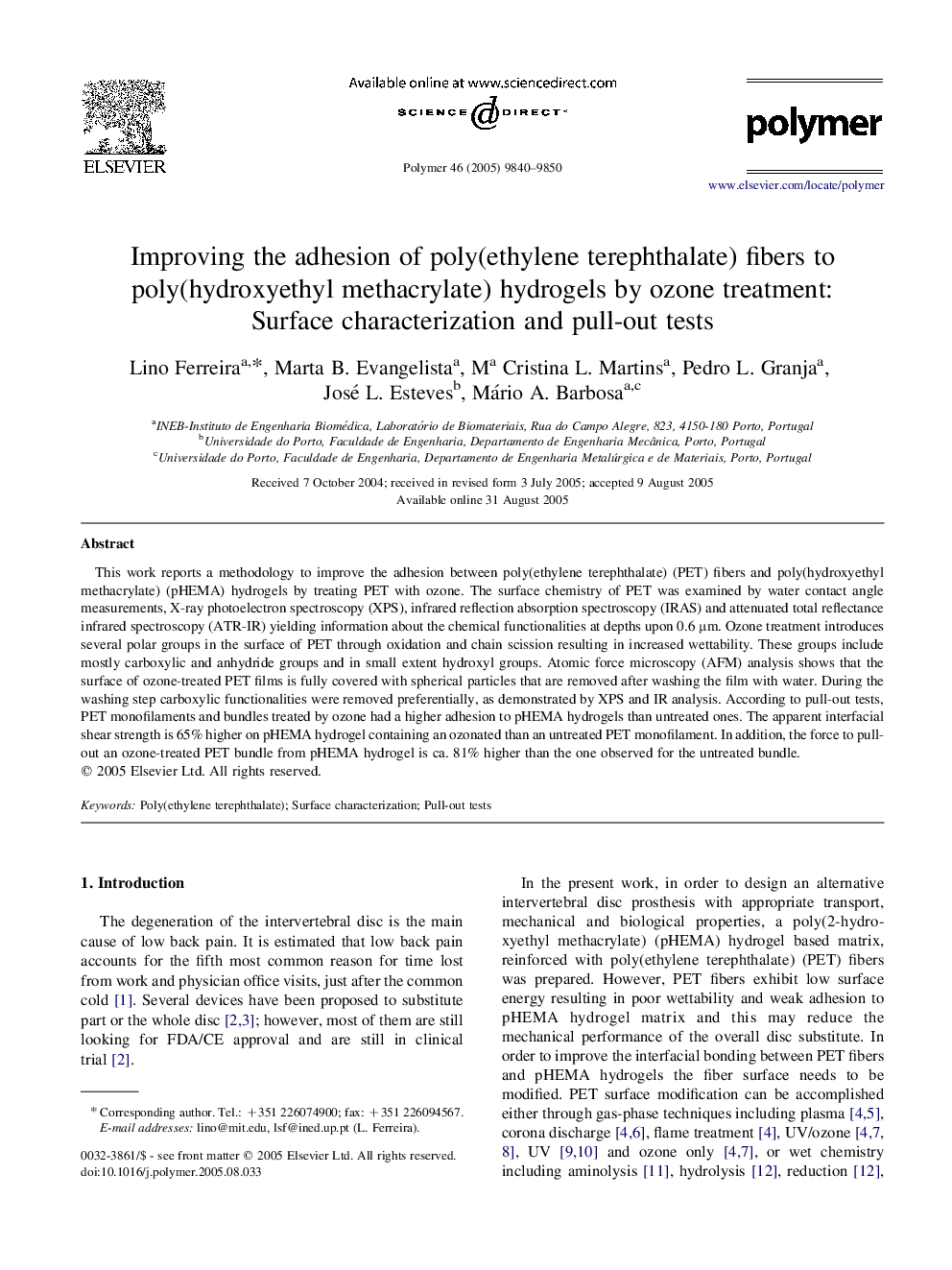| Article ID | Journal | Published Year | Pages | File Type |
|---|---|---|---|---|
| 5189854 | Polymer | 2005 | 11 Pages |
Abstract
This work reports a methodology to improve the adhesion between poly(ethylene terephthalate) (PET) fibers and poly(hydroxyethyl methacrylate) (pHEMA) hydrogels by treating PET with ozone. The surface chemistry of PET was examined by water contact angle measurements, X-ray photoelectron spectroscopy (XPS), infrared reflection absorption spectroscopy (IRAS) and attenuated total reflectance infrared spectroscopy (ATR-IR) yielding information about the chemical functionalities at depths upon 0.6 μm. Ozone treatment introduces several polar groups in the surface of PET through oxidation and chain scission resulting in increased wettability. These groups include mostly carboxylic and anhydride groups and in small extent hydroxyl groups. Atomic force microscopy (AFM) analysis shows that the surface of ozone-treated PET films is fully covered with spherical particles that are removed after washing the film with water. During the washing step carboxylic functionalities were removed preferentially, as demonstrated by XPS and IR analysis. According to pull-out tests, PET monofilaments and bundles treated by ozone had a higher adhesion to pHEMA hydrogels than untreated ones. The apparent interfacial shear strength is 65% higher on pHEMA hydrogel containing an ozonated than an untreated PET monofilament. In addition, the force to pull-out an ozone-treated PET bundle from pHEMA hydrogel is ca. 81% higher than the one observed for the untreated bundle.
Related Topics
Physical Sciences and Engineering
Chemistry
Organic Chemistry
Authors
Lino Ferreira, Marta B. Evangelista, Ma Cristina L. Martins, Pedro L. Granja, José L. Esteves, Mário A. Barbosa,
